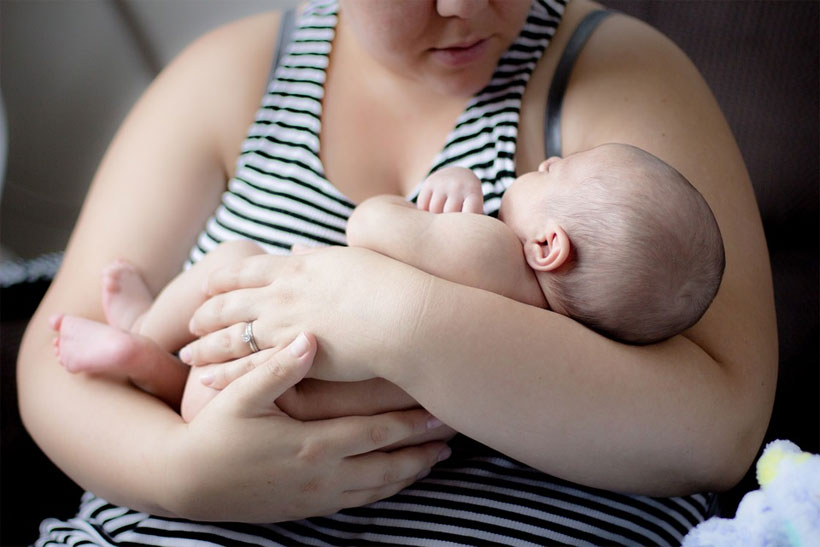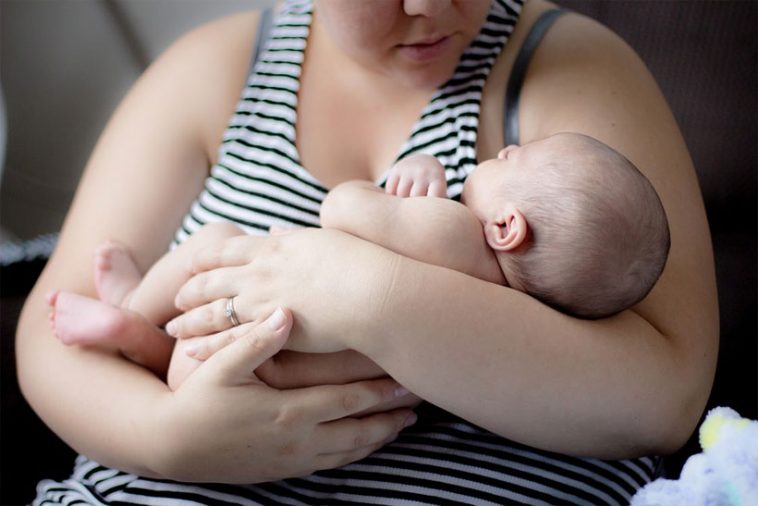- Like
- SHARE
- Digg
- Del
- Tumblr
- VKontakte
- Flattr
- Buffer
- Love This
- Save
- Odnoklassniki
- Meneame
- Blogger
- Amazon
- Yahoo Mail
- Gmail
- AOL
- Newsvine
- HackerNews
- Evernote
- MySpace
- Mail.ru
- Viadeo
- Line
- Comments
- Yummly
- SMS
- Viber
- Telegram
- JOIN
- Skype
- Facebook Messenger
- Kakao
- LiveJournal
- Yammer
- Edgar
- Fintel
- Mix
- Instapaper
- Copy Link
Introduction
 The first few days of motherhood are a blur — between adapting to the change physically, emotionally, mentally — changing diapers — sleep deprivation, beginning this new journey in life can be challenging and overwhelming.
The first few days of motherhood are a blur — between adapting to the change physically, emotionally, mentally — changing diapers — sleep deprivation, beginning this new journey in life can be challenging and overwhelming.
However, even with all the challenges, many moms are eager to hit the gym and lose the baby weight.
But, they don’t quite know that postpartum fitness is an entirely different ball game than what they had anticipated.
Even the best-intentioned new moms have to witness their fitness, taking a backseat when their little one sits at the driver’s seat.
This article has two sections. The first part will talk about things moms-to-be or new moms should know about postpartum exercises. And in the second part, we are going to discuss some tips that can help them ease back into working out after having a baby.
So, let’s start…
Things You Must Know About Easing Into A Fitness Routine After Birth
You Can’t Start Exercising Immediately After Pregnancy
No matter how eager you are to jump right back into your fitness routine, you must understand your body will take time to recover.
Every woman’s healing journey is different. Some take as much as two-three months whereas some of them get back to the grind as early as six weeks. That said, the healing experience actually depends upon your pre-pregnancy fitness level, your prenatal exercise routine, the kind of delivery you have had, and the complications you may have had during pregnancy.
If you have had an uncomplicated vaginal delivery, then you may resume light exercising as soon as you feel ready. However, you must consult with your doctor first to check if it is safe for you to reincorporate exercises. Additionally, get in touch with a postnatal fitness expert who can properly assess what exercise routine is appropriate for you.
Your Core Will Be Stretched
During pregnancy, as you gain weight and your belly expands, your core is stretched out, and your rectus abdominis gets separated. This separation is known as diastasis recti.
Doctors believe that virtually all women experience diastasis recti. For some women, the gap closes quickly after the delivery, but a few of them experience separation six-months postpartum. Many women are surprised to see their core stretched after delivery, which makes them feel different, vulnerable, helpless, and under-confident. Combined with other physical and emotional challenges, this makes getting back those toned abs back tricky. But nothing is impossible. Core strength and stability can be regained by focusing on exercises that strengthen your deepest abdominal muscles.
You Will Experience Different Kinds Of Pain
Motherhood comes with so many responsibilities that will leave you no time to think about anybody except the baby. You might not get time to relax, sleep or care about yourself because you will have more urgent needs to address. There will be situations where you will find yourself hanging out in uncomfortable positions just to make the baby feel comfortable. And with added lack of sleep, your body will feel terribly exhausted.
Additionally, due to the presence of relaxin hormone, your joints may remain looser than usual. Lack of joint stability and proper rest will make your body more prone to pains.
You Will Face Emotional Challenges, Too
Due to the raging hormones in the body, you may experience hormonal shifts and mood swings. While postpartum depression may make you feel emotionally and physically tired, light workout sessions can boost the blood circulation in the body and improve mood, which can really help deal with the anxiety and stress.
If the idealization of post-baby fitness is the reason for your stress, you must take a break and make realistic goals of postpartum recovery, and not just focus entirely on getting your body back.
Breastfeeding Burns Calories, But It’s Not A Workout
Gynaecologists believe that although breastfeeding does not count as exercise, but it sure does require 300-500 calories more than was needed to maintain pre-pregnancy weight. Due to this, you may burn more calories than ever before, but that does not necessarily mean you can set out your pre-pregnancy wardrobe.
Since your body may de-condition during that phase, you must slowly start incorporating exercises that focus on strength building and muscle toning. But, make sure that the workout is not strenuous so that it doesn’t impact the production of the breast milk. Also, consume enough calories and water to maintain the quality and quantity of the breast milk.
Take It Easy
With so many benefits that postpartum exercise offers, there is no denying the fact that developing a fitness routine after pregnancy can help you gain strength and confidence. But, it is still worth it to take it easy and slow.
As a new mom, your body will be experiencing a lot of changes that might feel challenging. That is why you must give your body time to recover before starting on a new journey to fitness.
If you notice muscle soreness after the workout, make sure you let your doctor know so that they can suggest the needful.
Tips For Safe Postpartum Fitness
Once your doctor gives you a heads-up to start postpartum exercise, you can create a safe and effective fitness routine following these 7 important tips.
Get a deep tissue massage.
Postpartum massage is as essential as a prenatal massage. It is an effective and holistic approach that helps your body to restore its pre-pregnancy condition, and speeds healing.
Deep tissue massage post-pregnancy can also help reduce stress, improve breastfeeding, and regulate the hormone levels in the body. Since it helps in postpartum recovery, it can incredibly help new moms gain energy and improve endurance so that they can ease into a workout routine. So, before you join the postnatal workout training, book an appointment with a professional massage therapists at Bodytonic Clinic.
Start the workout slowly.
As mentioned before, give your body a little time to heal before jumping back into a workout regimen. Be practical about your goals. Don’t stress about fitting back in post-pregnancy clothes. If you feel you are not ready, do not push yourself. Instead, take it slow.
A short walking workout can be an excellent start to your road back. Don’t let exercise guilt get to you. Take a 10-minute walk after every meal. After a few days, consult your doctor, and increase the time duration. Slowly and steadily build your strength and let your body get accustomed to it. Once your body is ready, add some gentle stretching exercises to your routine.
Wait for the bleeding to stop.
Do not ignore the warning signs that your body shows. If you notice that your bleeding has started to get heavier after incorporating heavy exercises, slow down and take a break till the bleeding stops. This is only a sign that your body needs more time to recover.
Try out different activities.
Once the doctor gives a green signal to return to a general fitness routine, wear your sweatpants, a lightweight t-shirt, and hit the gym or attend postnatal workout session. It’s not a compulsion to opt for higher impact cardio exercises.
If you are an avid swimmer, join swimming classes. Apart from helping you strengthen your core and back muscles, swimming provides an excellent path for losing excess weight. Moreover, it is easier on your joints, which brings me to the next tip…
Mind your joints.
Relaxin, the hormone produced during pregnancy to soften the joints and ligaments might stay in the body for upto 6 months after delivery. That said, it can continue performing its function postpartum, and lead to unstable joints. So, be careful. Make sure that the exercise routine you adopt doesn’t stress your body too much.
Drink a lot of water.
The importance of staying hydrated cannot be understated. So, make sure you are drinking enough water, especially if you are breastfeeding. Whenever you go for a walk or hit the gym, ensure that you always carry a bottle of water with you at all costs.
Lift those weights.
As you strengthen your core & pelvic floor muscles and improve every day, it’s time you get ready for more. Start lifting those weights a couple of days in a week. Don’t worry, doing so won’t turn you into “THE HULK”, instead it will help you prepare for all the times you will be lifting your baby.
Rest up.
A postnatal exercise routine can help you feel more energetic and confident, but if you are sleep deprived, it can also suck the energy out of your system. Exercising should not cause added exhaustion, so make sure you get enough sleep. If you feel well-rested, you can dismiss the state of fatigue and put much more energy into your training session.
Conclusion
Do not keep crazy expectations of what your post-pregnancy body should look like. That will only cause you stress and anxiety. Instead, embrace your body; give it time to heal, and then take steps towards getting fit and healthy.
Don’t let people tell you how your postpartum fitness should be. It’s your body. It’s your life. Who cares what people think?
About Shannon Clark
Shannon holds a degree in Exercise Science and is a certified personal trainer and fitness writer with over 10 years of industry experience.

